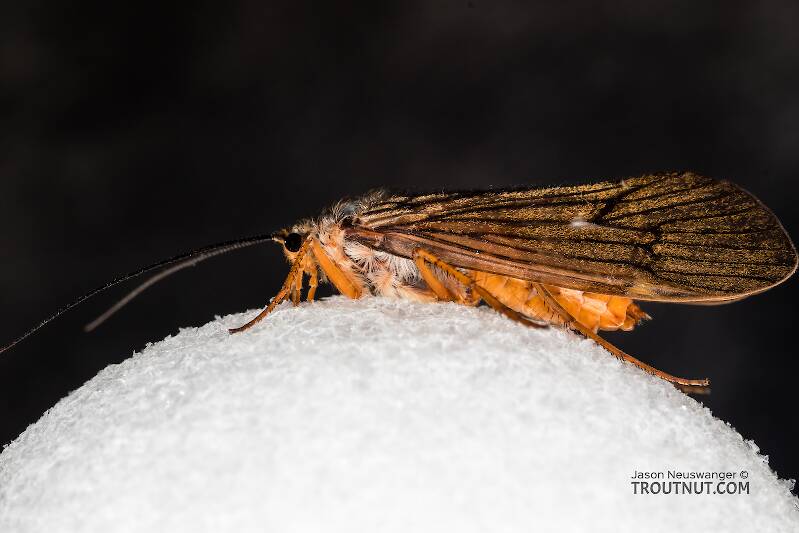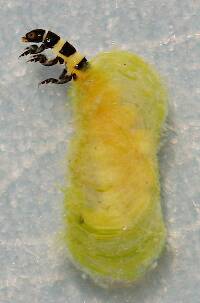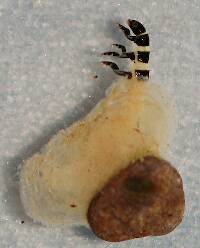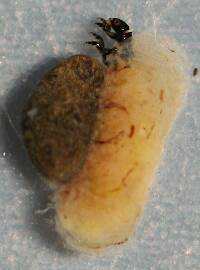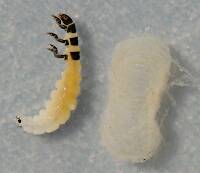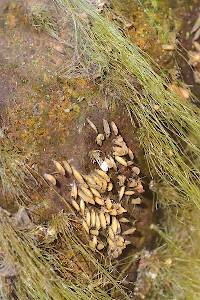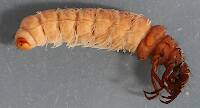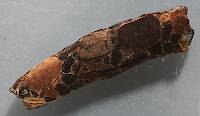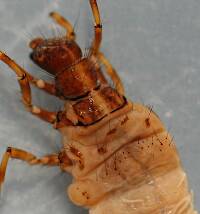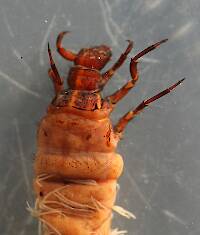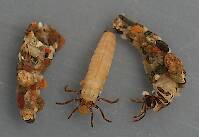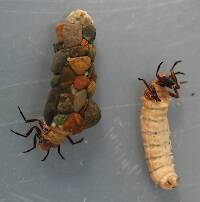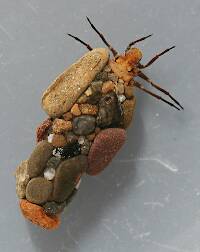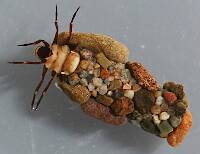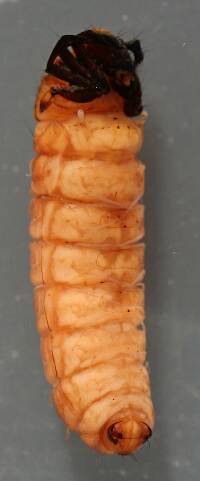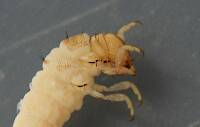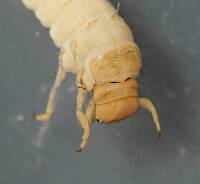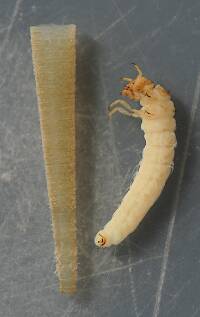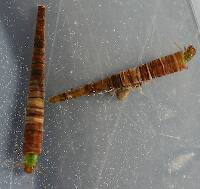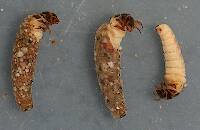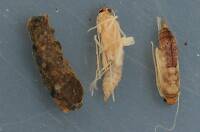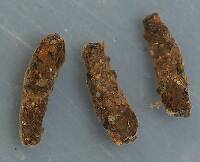
Salmonflies
Pteronarcys californica
The giant Salmonflies of the Western mountains are legendary for their proclivity to elicit consistent dry-fly action and ferocious strikes.
Featured on the forum

This is an interesting one. Following the keys in Merritt R.W., Cummins, K.W., and Berg, M.B. (2019) and Jacobus et al. (2014), it keys clearly to Ephemerella. Jacobus et al provide a key to species, but some of the characteristics are tricky to interpret without illustrations. If I didn't make any mistakes, this one keys to Ephemerella mucronata, which has not previously been reported any closer to here than Montana and Alberta. The main character seems to fit well: "Abdominal terga with prominent, paired, subparallel, spiculate ridges." Several illustrations or descriptions of this holarctic species from the US and Europe seem to match, including the body length, tarsal claws and denticles, labial palp, and gill shapes. These sources include including Richard Allen's original description of this species in North America under the now-defunct name E. moffatae in Allen RK (1977) and the figures in this description of the species in Italy.

Troutnut is a project started in 2003 by salmonid ecologist Jason "Troutnut" Neuswanger to help anglers and
fly tyers unabashedly embrace the entomological side of the sport. Learn more about Troutnut or
support the project for an enhanced experience here.
This topic is about the Insect Order Trichoptera
Some say caddisflies are even more important than mayflies, and they are probably right. The angling world has taken a while to come to terms with this blasphemy. Caddis imitations are close to receiving their fare share of time on the end of the tippet, but too many anglers still assume all caddisflies are pretty much the same.Caddis species actually provide as much incentive to learn their specifics as the mayflies do. There is just as much variety in their emergence and egg-laying behaviors, and as many patterns and techniques are needed to match them. Anglers are hampered only by the relative lack of information about caddisfly behavior and identification.
Example specimens
DaveC
Posts: 2
Posts: 2
DaveC on Jun 18, 2007June 18th, 2007, 9:17 am EDT
The definition provided by Jason suggests that Behavioral Drift occurs when cased larvae simply "let go" of the stream bed, rocks, plants, etc. and drift while still encased within their cases. However, I always presumed the case, or test, was specifically constructed from material that added "ballast" to the grub and therefore prevented it from being swept away in the current.
QUESTION: Do larvae ever crawl OUT of their cases/tests and drift "naked" until they settle somewhere downstream, and then begin to build a NEW case/test?
It would be useful to know whether a "behaviorally drifting caddis" larva pattern should imitate the appearance of a case or test that's constructed of sand, leaves, twigs, etc., or whether it should instead imitate the appearance of just the naked grub.
QUESTION: Do larvae ever crawl OUT of their cases/tests and drift "naked" until they settle somewhere downstream, and then begin to build a NEW case/test?
It would be useful to know whether a "behaviorally drifting caddis" larva pattern should imitate the appearance of a case or test that's constructed of sand, leaves, twigs, etc., or whether it should instead imitate the appearance of just the naked grub.
GONZO on Jun 18, 2007June 18th, 2007, 9:36 am EDT
Short answer: As I understand it, yes, some behavioral drift of case-building caddisflies is caseless. (Glossosoma and Dicosmoecus larvae are two examples that come to mind. I'm sure there are many others.)
Troutnut on Jun 18, 2007June 18th, 2007, 9:55 am EDT
Yes, some of them do drift without their cases. Gary LaFontaine in Caddisflies mentions imitating the un-cased drifting larvae of otherwise case-building caddisflies in at least a few places.
Jason Neuswanger, Ph.D.
Troutnut and salmonid ecologist
Troutnut and salmonid ecologist
JeffK on Jul 3, 2007July 3rd, 2007, 8:49 am EDT
One October on the Beaverkill the rocks were covered with a sand cased caddis. When I tried to catch them they scooted away and I couldn't catch them by hand. I was surprised that cased caddis could be so frisky. The cased caddis I see in the spring are easy to catch by hand.
Quick Reply
Related Discussions
Topic
Replies
Last Reply
9
Dec 1, 2014
by Stewart711
by Stewart711


